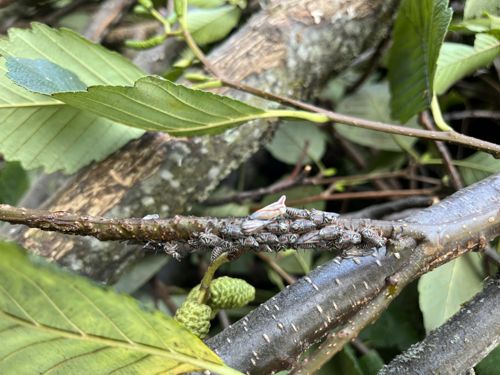Woolly Alder Aphid
Scientific Name: Prociphilus tessellatus
Order & Family: Hemiptera, Aphididae
Size: Adults are typically 2-4 mm long. The nymphs are smaller.

Natural Habitat
Primarily found on alders and maples, particularly silver maples. They infest twigs and branches.
Diet & Feeding
They feed on the sap of trees, especially alder and silver maple. They have piercing-sucking mouthparts that they insert into the phloem to extract liquids.
Behavior Patterns
Woolly alder aphids produce a white, waxy secretion that covers their bodies, making them appear woolly. They often aggregate in dense clusters on twigs and branches. They have a complex life cycle involving alternation between host plants (maples as primary hosts where eggs overwinter, and alders as secondary hosts during summer). They excrete a sugary substance called honeydew, which can attract other insects like ants and promote the growth of sooty mold.
Risks & Benefits
The primary risk is to host trees, as heavy infestations can cause curling and distortion of leaves, stunting of growth, and branch dieback due to sap loss. The honeydew excreted can also be a nuisance, coating surfaces below the infested trees and fostering sooty mold growth, which can blacken leaves and reduce photosynthesis. While generally not fatal to mature trees, severe infestations can weaken young trees. They do not pose a direct risk to humans, though the sticky honeydew can be annoying. Natural predators like lady beetles and lacewings feed on them, providing some biological control.
Identified on: 9/10/2025